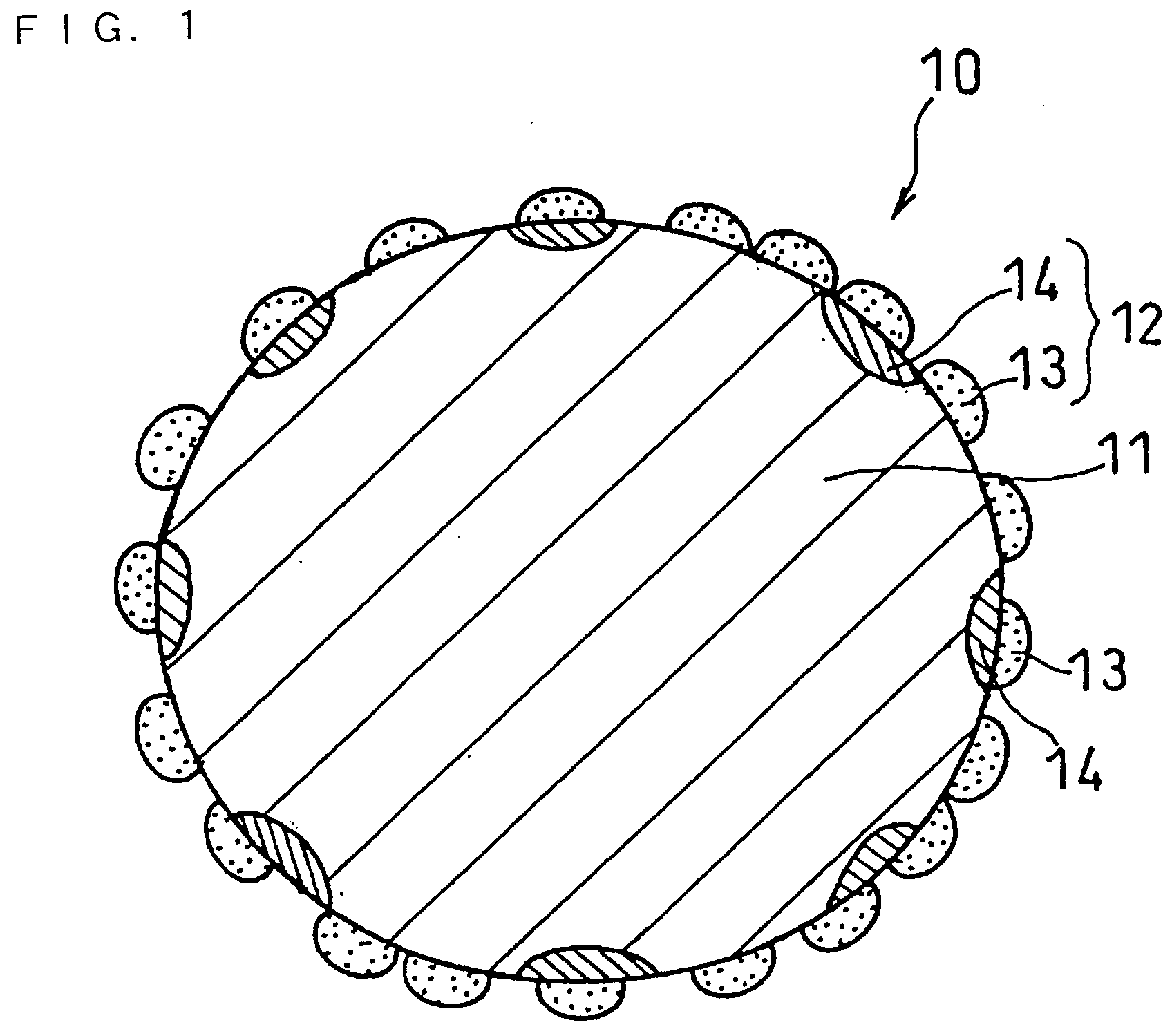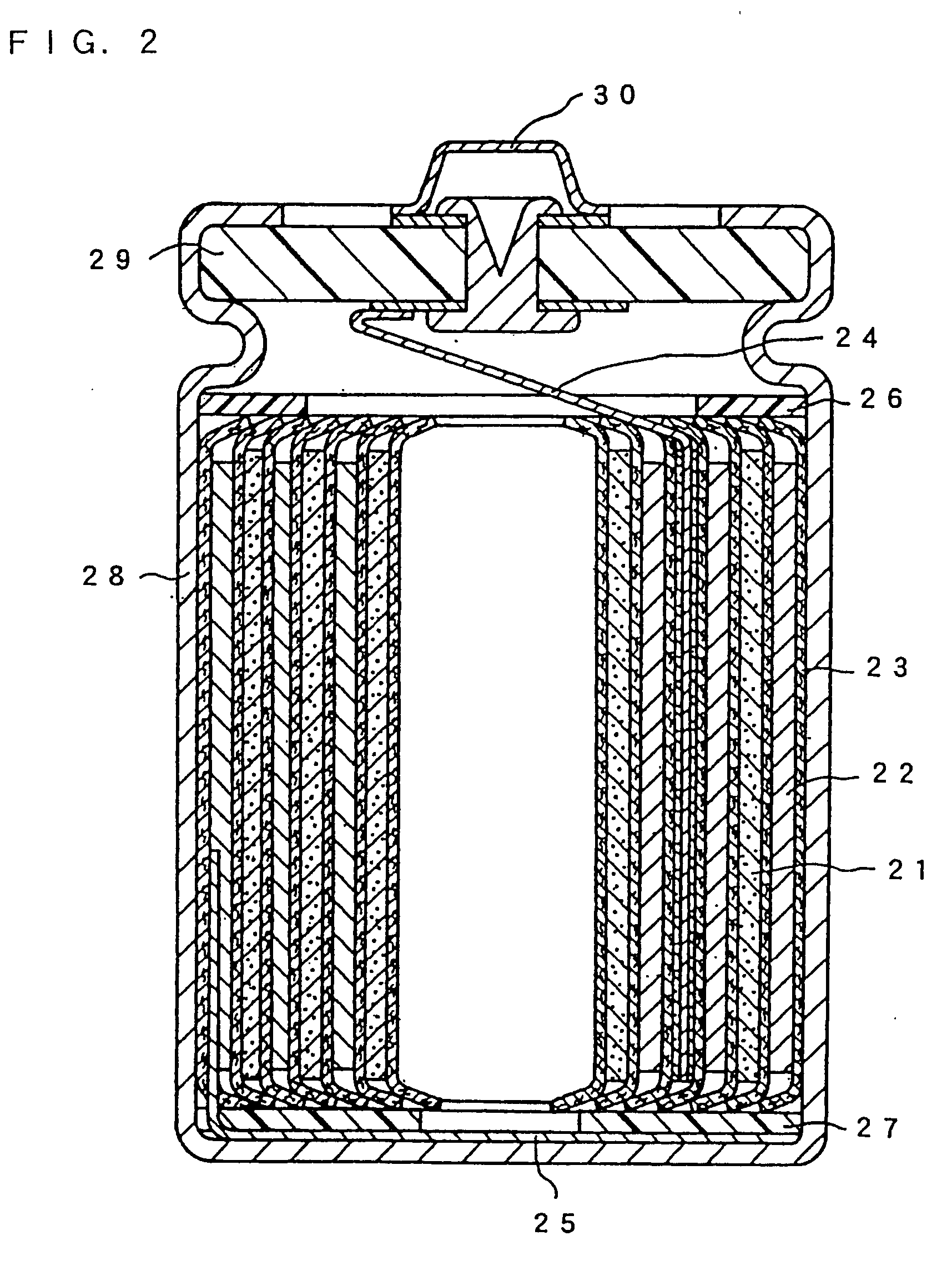Lithium Ion Secondary Battery And Manufacturing Method Therefor
a secondary battery and lithium ion technology, applied in the field of lithium ion secondary batteries, can solve the problems of difficult to curb heat generation and difficult to reduce costs, and achieve the effects of reducing the decline of high-rate performance at low temperature, improving safety at the time of internal short circuit, and reducing cos
- Summary
- Abstract
- Description
- Claims
- Application Information
AI Technical Summary
Benefits of technology
Problems solved by technology
Method used
Image
Examples
example 1
Example Battery A1
(i) Synthesis of First Lithium-nickel Composite Oxide
[0103] Nickel sulfate, cobalt sulfate, and aluminum sulfate were mixed so that a molar ratio of Ni atoms, Co atoms, and Al atoms was 80:15:5. The obtained mixture in an amount of 3.2 kg was dissolved in 10 L of water, to obtain a raw material solution. To the raw material solution, 400 g of sodium hydroxide was added to form a precipitate. The precipitate was sufficiently washed with water and dried, to obtain a coprecipitated hydroxide.
[0104] To 3 kg of the obtained coprecipitated hydroxide of Ni—Co—Al, 784 g of lithium hydroxide was mixed in, and the mixture was baked for 10 hours at a temperature of 750° C. under an atmosphere with an oxygen partial pressure of 0.5 atm, to obtain a first lithium-nickel composite oxide (LiNi0.8Co0.15Al0.05O2) including Al as element Me.
[0105] Various first lithium-nickel composite oxides were also synthesized by using various raw materials, instead of the above coprecipitat...
example battery a2
[0115] Battery A2 was made in the same manner as Battery A1 except that the amount of tantalum pentaethoxide dissolved in 10 L of ethanol was changed to 2.0 mol % relative to the first lithium-nickel composite oxide.
example battery a3
[0116] Battery A3 was made in the same manner as Battery A1, except that in the first step of synthesizing active material particles, a solution dissolving aluminum (Al: element M) triisopropoxide in 10 L of isopropanol was used instead of the ethanol solution of tantalum pentaethoxide. The amount of aluminum triisopropoxide dissolved was set to 0.5 mol % relative to the first lithium-nickel composite oxide.
PUM
| Property | Measurement | Unit |
|---|---|---|
| Temperature | aaaaa | aaaaa |
| Fraction | aaaaa | aaaaa |
| Temperature | aaaaa | aaaaa |
Abstract
Description
Claims
Application Information
 Login to View More
Login to View More - R&D
- Intellectual Property
- Life Sciences
- Materials
- Tech Scout
- Unparalleled Data Quality
- Higher Quality Content
- 60% Fewer Hallucinations
Browse by: Latest US Patents, China's latest patents, Technical Efficacy Thesaurus, Application Domain, Technology Topic, Popular Technical Reports.
© 2025 PatSnap. All rights reserved.Legal|Privacy policy|Modern Slavery Act Transparency Statement|Sitemap|About US| Contact US: help@patsnap.com



